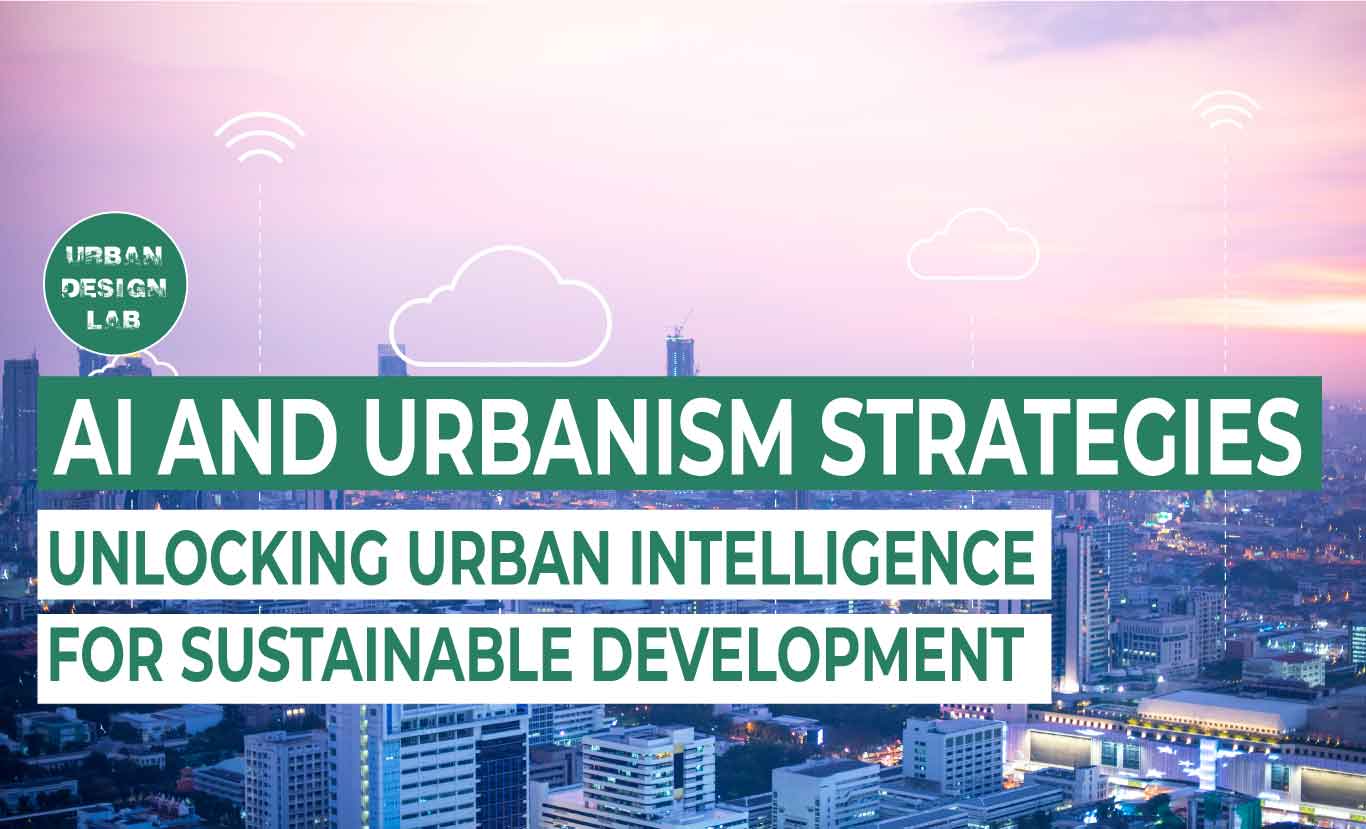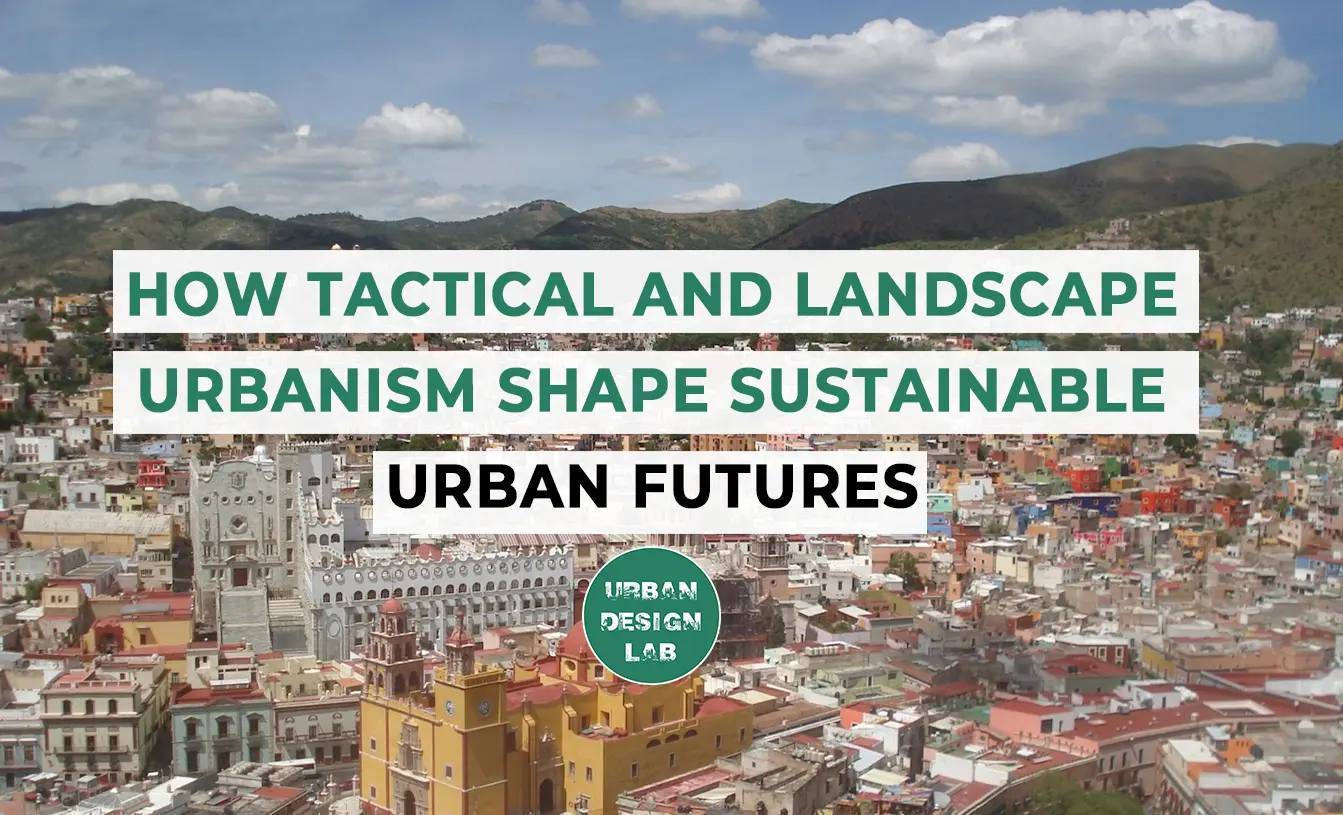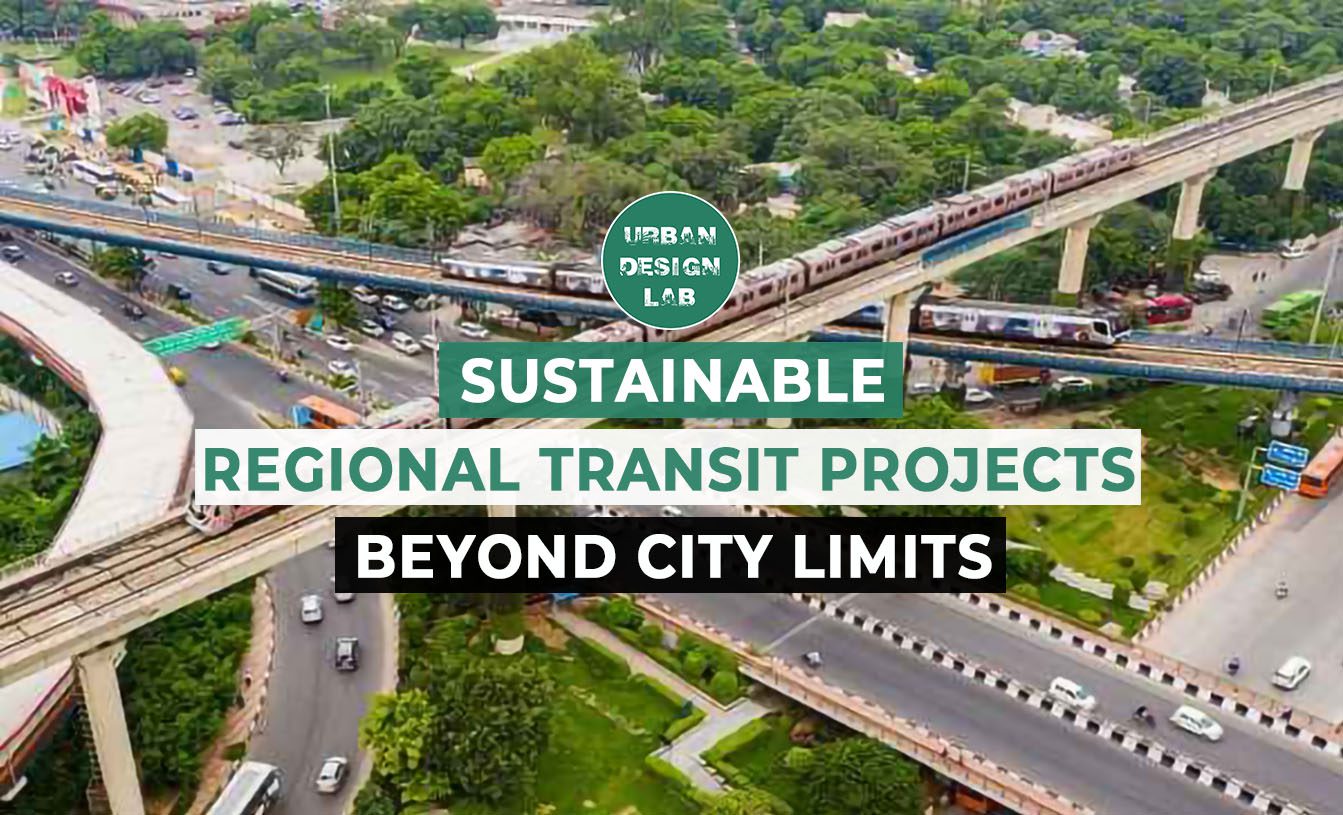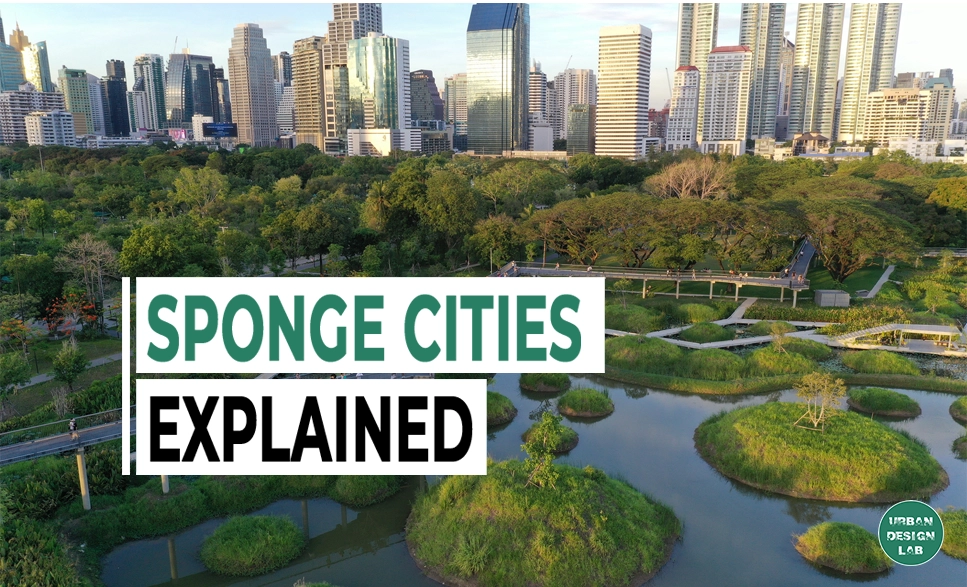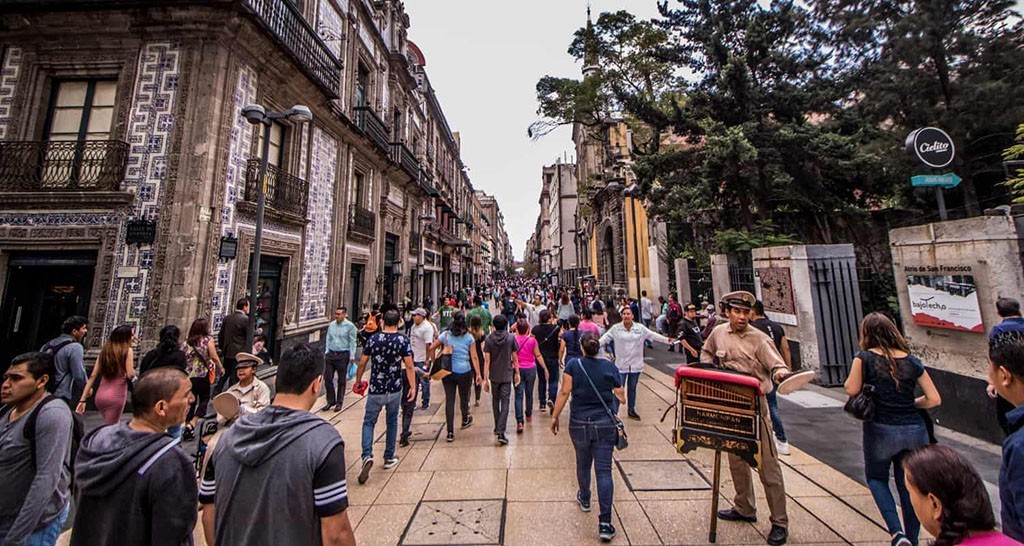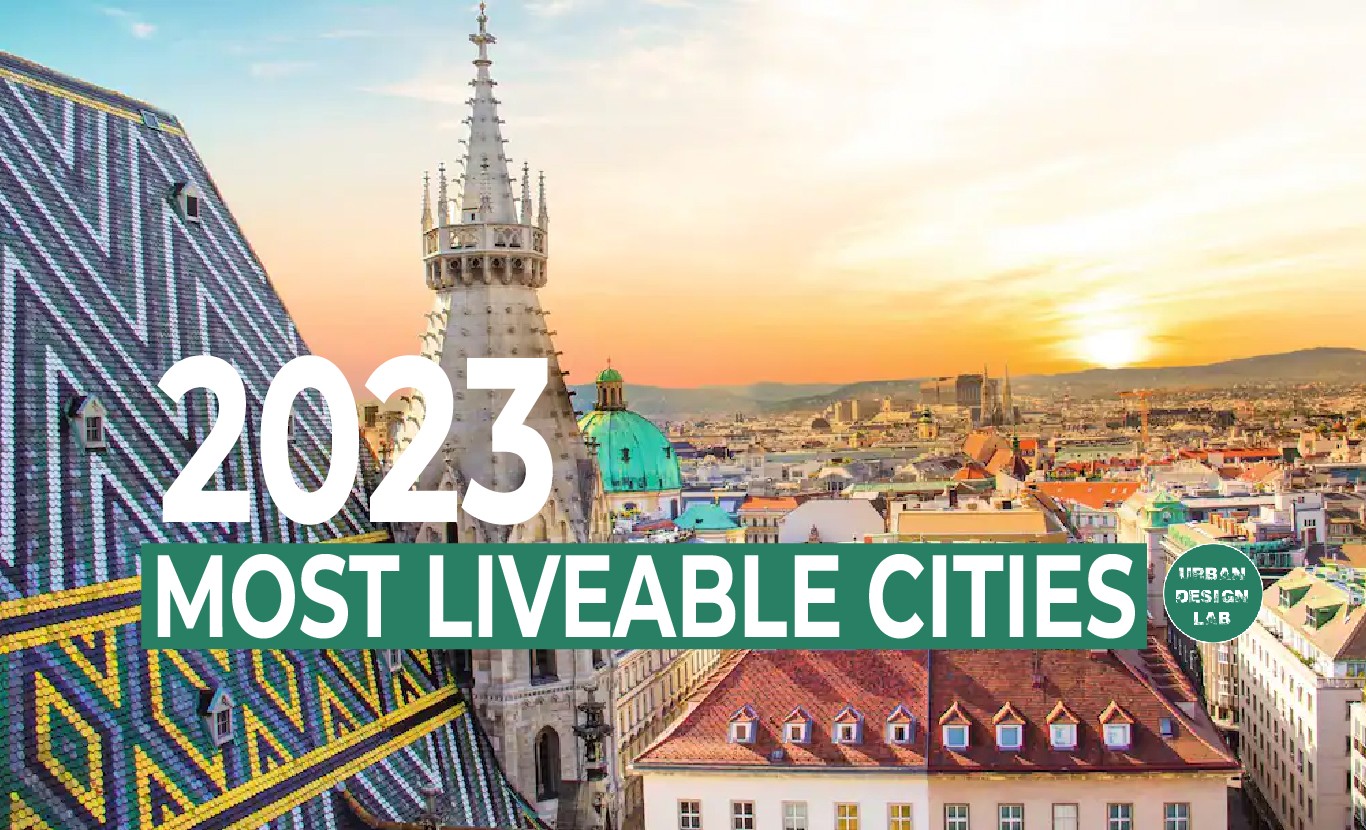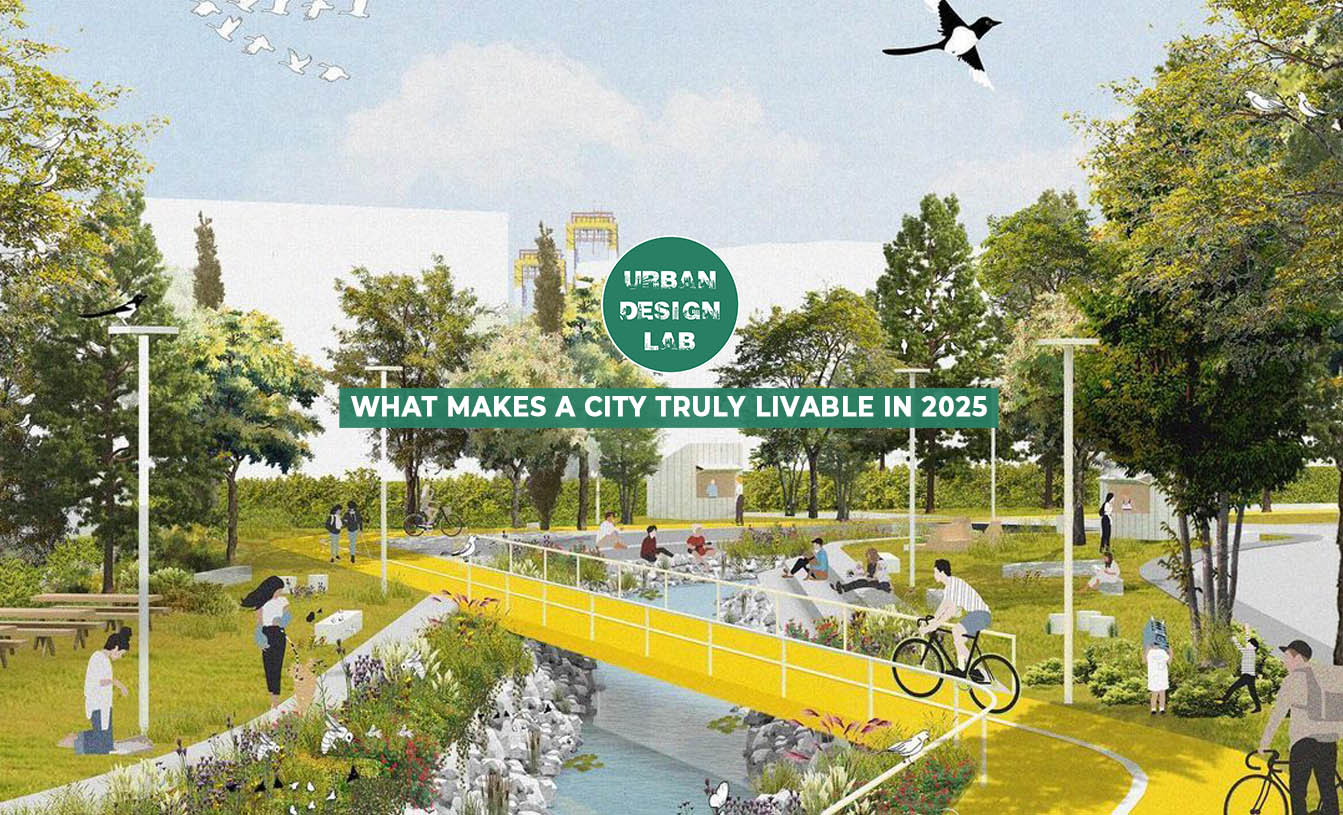
The Influence of Street Design on Health and Wellbeing
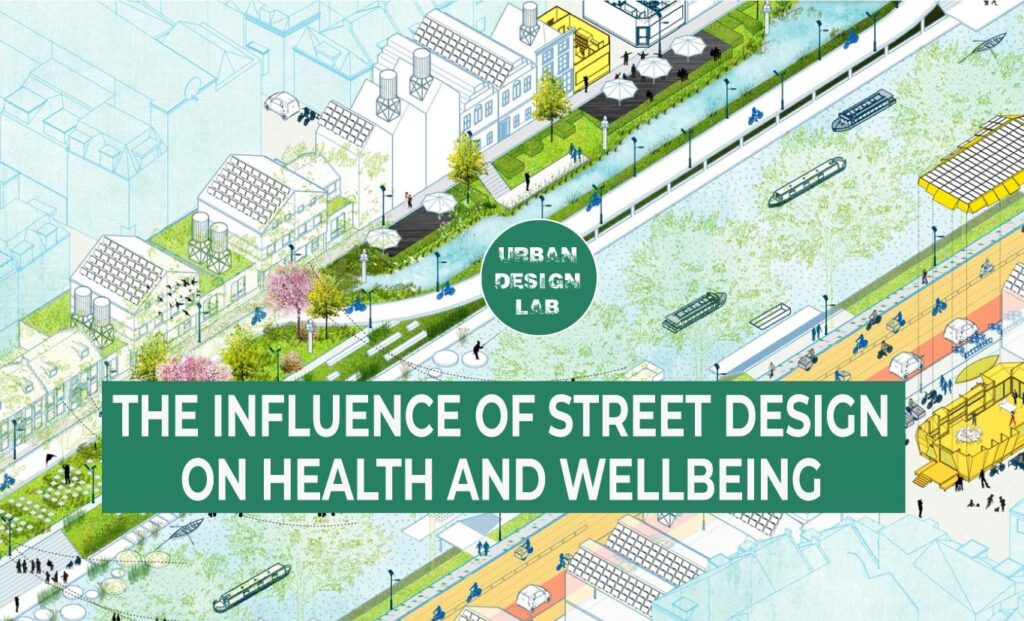
What is Street Design?
Street design encompasses the intricate network of roadways and pedestrian areas within urban settings. These thoroughfares connect communities, cultures, open spaces, and human settlements, serving as conduits for mobility. Beyond mere transportation routes, streets are the fundamental building blocks of urban spaces. They are dynamic, multi-dimensional environments characterized by diverse surfaces, buildings, and functions. Street design influences not only land use but also the environmental sustainability, public health, economic activity, and cultural significance of urban areas.
Streets are shaped by several planes, including the ground plane, which forms the roadway, the sides of buildings, and the margins of the roadbed. The canopy plane acts as the “roof” of this urban room. These planes are composed of numerous components, often regulated by various codes, guidelines, and building practices.
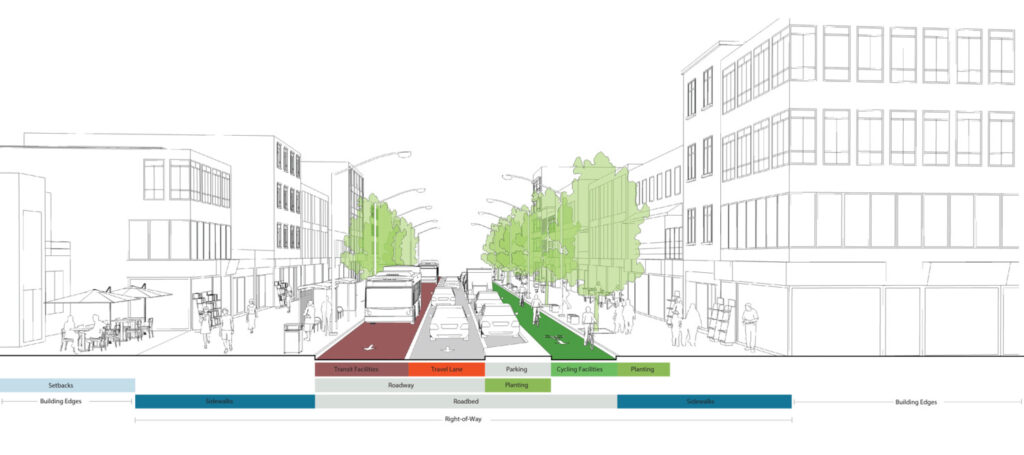
What is Healthy Living?
A healthy city is defined by a process, not an outcome. Healthy cities are places that deliver for people and the planet. They engage the whole of society, encouraging the participation of all communities in the pursuit of peace and prosperity. Healthy cities lead by example to achieve change for the better, tackling inequalities and promoting good governance and leadership for health and well-being. Innovation, knowledge sharing and health diplomacy are valued and nurtured in healthy cities. Source: World Health Organization, what is Healthy City?
However, most of the 4.2 billion people living in cities suffer inadequate housing and transport, poor sanitation and waste management, and air quality that fails WHO guidelines. Other forms of pollution, such as noise, water and soil contamination, so-called urban heat islands, and a lack of space for walking, cycling and active living further combine to make cities epicentres of a noncommunicable disease epidemic and drivers of climate change.
Source: World Health Organization, Urban Health
What is Healthy Street?
The concept of a “Healthy Street” is centered around the idea that every decision made in urban planning, no matter how small, presents an opportunity to enhance the quality of life and improve public health. The Healthy Streets Approach is a human-centric framework that integrates public health into transportation, public spaces, and urban planning. This approach is adaptable to streets worldwide, emphasizing incremental improvements over rigid end goals. It necessitates changes in decision-making processes related to streets and transport, fostering healthier and safer urban environments.
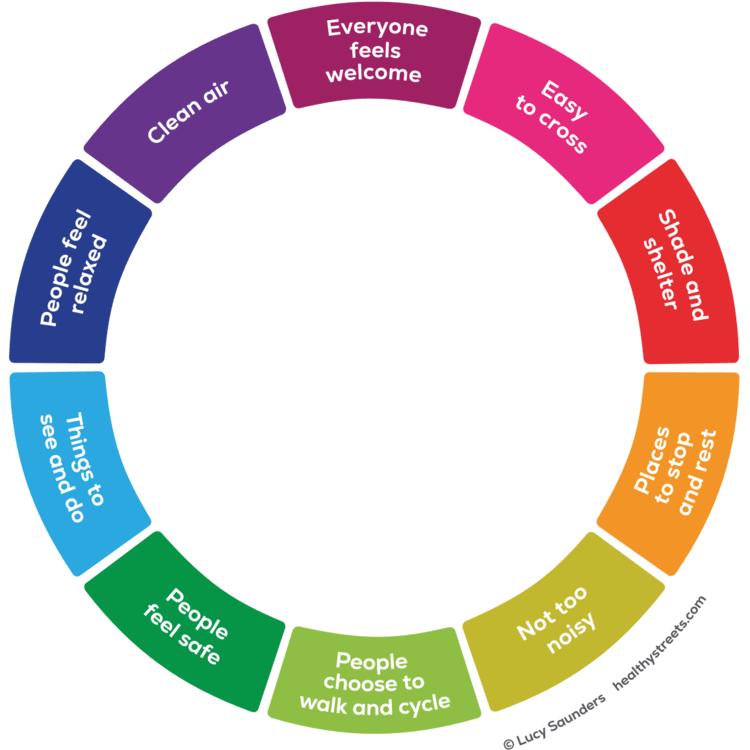
Safety Guidelines for Street
As per global street design guidelines, safer street -save lives describes that annual road fatalities total more than 1.2 million persons worldwide. With over 3,400 fatalities each day throughout the year, that equates to nearly one death every 30 seconds. Many of these fatalities take place on city streets in crashes that could have been avoided due to street design-induced behaviour.
It is the joint obligation of designers, engineers, regulators, and civic leaders to provide safe roadways. Moving around a city can be perilous on a regular basis, even in places with excellent safety records due to the likelihood of road violence. Highway-like Street layouts that put cars before vulnerable individuals and promote fast speeds don’t create secure spaces.
A New Paradigm for Safety
A new paradigm for road safety focuses on human limits. The human body is fragile and can only withstand certain forces. This paradigm aims to reduce the risk of conflict, lower the number and severity of crashes, reduce speed, and shape streets that are safe for all users. Slower vehicle speeds significantly increase survival chances in the event of a crash. Safety initiatives require both regulations and education. Street design plays a crucial role in mitigating the severity of collisions caused by human error. Therefore, it’s essential to prioritize safe street design, as it can have a direct or indirect impact on the safety of street users. Sustainable safety initiatives like Vision Zero aim for safer streets.
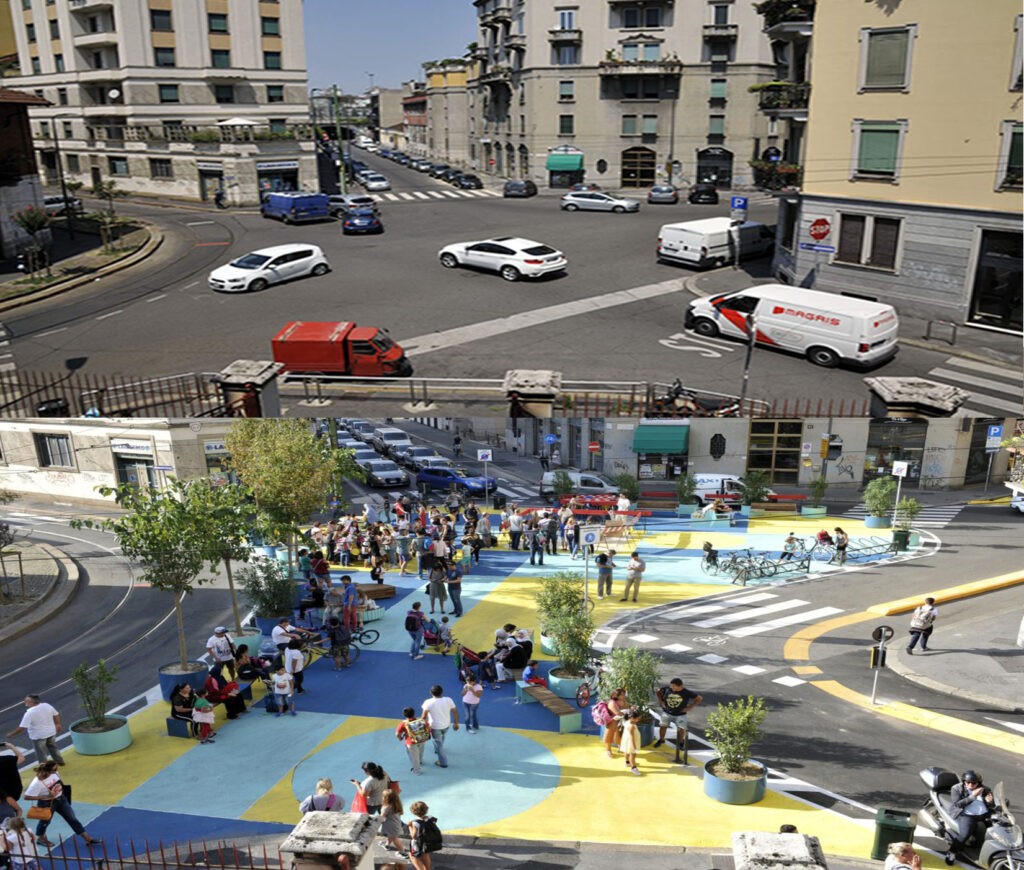
Street Design Model for Healthy Living Standards
The Healthy Streets Index Barcelona, developed in collaboration with Barcelona Regional: Agència Desenvolupament Urbà, provides a comprehensive scoring system for urban environmental characteristics. It evaluates both environmental and experiential aspects of a place. This index is invaluable for choosing where to live, as it factors into search applications, pricing, evaluation of development sites, and new development design. It places great importance on the quality of the surrounding street environment, ensuring that it is conducive to health and well-being. However, current property search apps often provide limited information about the local environment, making it challenging to determine if a location is healthy, walkable, and welcoming.
Routing and Navigation Helping us find the best routes to walk, cycle and run
Routing and navigation applications need to prioritize healthier, greener, and more pleasant routes for walking, running, cycling, and exploring urban areas. Current apps often prioritize speed and major roads, which are more likely to be polluted and dominated by cars. The Healthy Streets Index can be integrated into routing engines to prioritize routes that offer healthier environments and are safer for active transportation. This encourages more people to engage in active travel, improving overall health and well-being.
Strategic Planning
Data-led strategic planning is essential for the creation of large-scale active travel networks that are accessible to all. Currently, street infrastructure improvements are often fragmented, creating disparities in urban environments. The Healthy Streets Index offers a standardized traffic rating that aids in city-wide improvement planning and the development of comprehensive active travel networks. By considering environmental factors like air quality and noise, this index ensures that streets are not only safe but also conducive to walking and cycling.
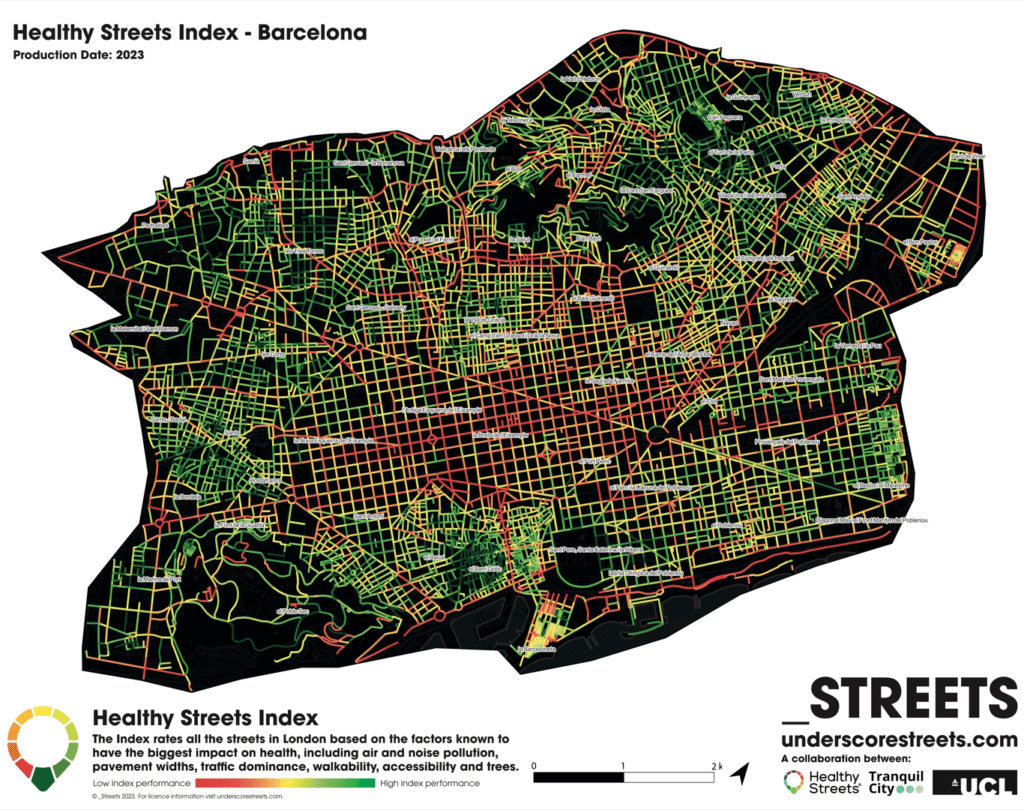
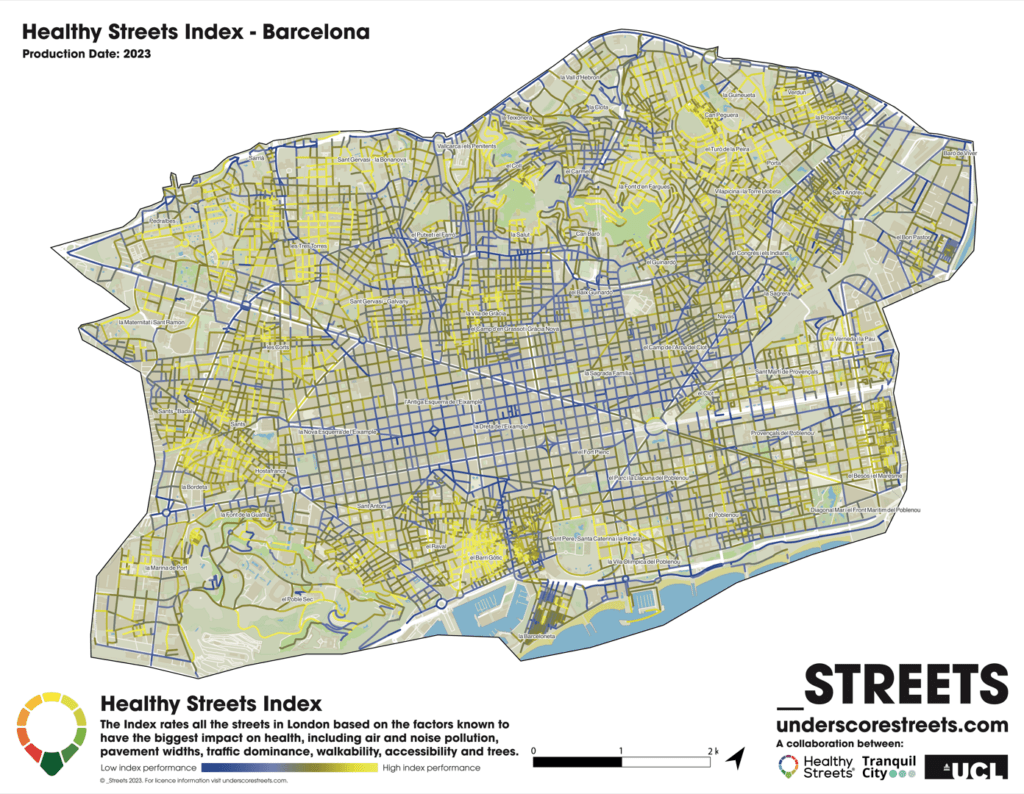
Strategic Planning
Data-led strategic planning is essential for the creation of large-scale active travel networks that are accessible to all. Currently, street infrastructure improvements are often fragmented, creating disparities in urban environments. The Healthy Streets Index offers a standardized traffic rating that aids in city-wide improvement planning and the development of comprehensive active travel networks. By considering environmental factors like air quality and noise, this index ensures that streets are not only safe but also conducive to walking and cycling.
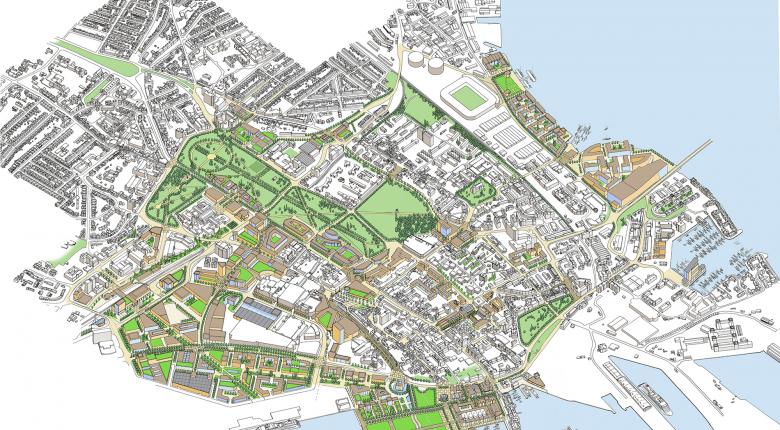
Economic and Social Benefits
Well-designed streets and urban spaces have clear economic benefits. They lead to increased foot traffic, longer dwell times, and support local businesses. Good design can also attract new companies to the region, providing job opportunities and stimulating the local economy. Moreover, the physical and mental health benefits of well-designed streets, including access to green spaces, are significant. These benefits contribute to the overall well-being of city dwellers.
Future Benefits for city design guide
The work carried out as part of the Downtown Action Plan and the Downtown Master Plan has established a well-conceived long-term vision for downtown development. This effort, in conjunction with the associated public realm report by Gehl Architects, served as the driving force behind the creation of the streets and spaces framework. The framework plan presented combines the existing block structure within the city center with potential future changes.
Specific changes proposed by the CCMP have been integrated in areas around Central Station, the Major Development Quarter, and west of Above Bar. The master plan outlined in the current development agreement for the Royal Pier, along with the proposed block arrangement in the Chapel Riverside Development Brief, has been incorporated into this framework.
In terms of design characteristics, the streets in focus are designed to accommodate high volumes of traffic, often on wide, multi-lane, multi-modal thoroughfares. They may feature a broad central reservation with trees or lamp columns, paving, or grass. Additionally, trees can be integrated on both sides of the street and within the central reservation. These streets are often associated with high-quality commercial buildings.
As for the question of whether living in greener urban areas contributes to happiness, a study drawing on 18 years of panel data from over 10,000 participants reveals a positive relationship between urban green space and well-being. The presence of green spaces has been associated with improvements in mental well-being and life satisfaction, as evidenced by a fixed-effects analysis of panel data. This suggests that urban green spaces can indeed deliver significant benefits for mental well-being.
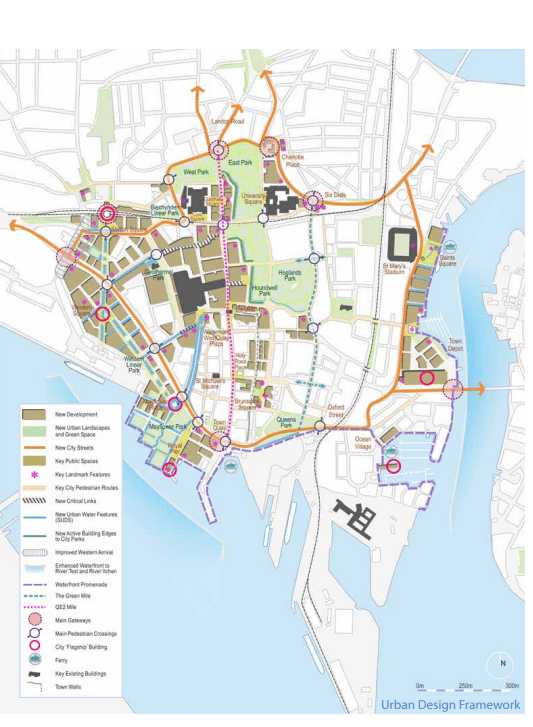
Conclusion
Both case studies are showing Street indicators and Healthy street index by the provision of proper function design areas and transits according to the urban environment.
These studies can help to understand more about how can we grow more knowledge among students and the local public to understand their own potential lifestyle to communicate and work together for global solutions to make a sustainable living without worry about the future. These studies have been applying for theories and practice of live ongoing projects. Take a visit through site locations to compare old and new development of street design for health benefits.
References:
- What is Street, Global Street Design guide
- World Health Organization, what is Healthy City? World Health Organization, Urban Health
- What is Healthy Street by Lucy Saunders @ healthystreet.com The Social and Emotional Benefits of Good Street Design, Jim Mayor & Benjamin Coleman Brighton & Hove City Council Public Realm
- https://urbandesigndr.co.uk/bfl/
- Cities health and wellbeing by Helen Pineo, UCL and BRE Professor Yvonne Rydin, UCL, (June 2018) Healthy Streets Barcelona by The Healthy Street Approach by Lucy Saunders for the research, The Bartlett School of architecture https://www.underscorestreets.com/the-healthy-streets-index-1
- In collaboration with Barcelona Regional: Agència Desenvolupament Urbà https://static1.squarespace.com/static/5e85ddf630492e52bd451e9a/t/63d99ef412f3a01fe7121be5/1675206437182/2023_HSI+Barcelona_TrafficLight_R02.jpg
- Streets for Healthy Life: A companion guide to Building for a Healthy Life-issue -01 for Homes England by PJA consultants, Living street London, Andrew Cameron & associates, David Orr consulting Streets & spaces plan for South Hampton: pg.(71) Final Report Southampton City Centre The Master Plan A , Master Plan for Renaissance
Shailee Bhatt is an Architect & Urban Designer. She did work on projects like education campus design, garden redevelopment projects, and economically weaker section housing master plans for India. Her volunteer work in the Green Impact Jury Report was the first prize winner in the UK, for Leeds Beckett University. Shailee likes to put her ideas and imagination into master planning & designing better public spaces. She follows architecture through art. Her designs are based on context. Her methods of visualization are through paint strokes and sketches. Shailee’s ideology of working for the public is to give language and definition to every element for its routine purpose, which must be healthy and sustainable.
Conclusion
References
About the author
Related articles


Architecture Professional Degree Delisting: Explained

Periodic Table for Urban Design and Planning Elements


History of Urban Planning in India
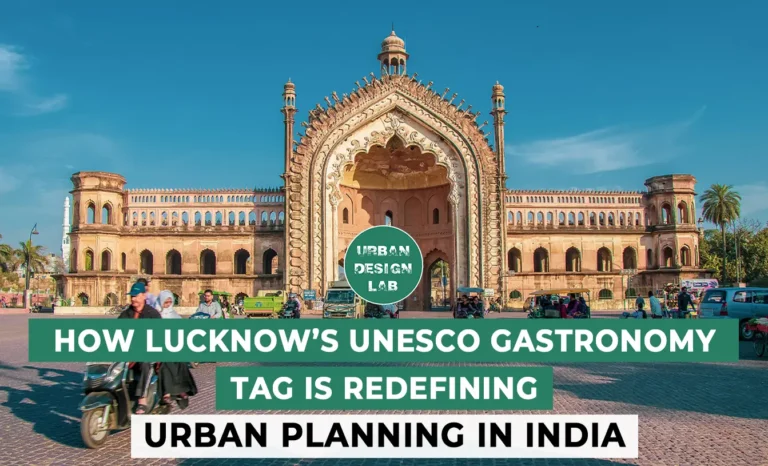
UDL GIS
Masterclass
Gis Made Easy- Learn to Map, Analyse and Transform Urban Futures
Session Dates
15th-19th December 2025

Urban Design Lab
Be the part of our Network
Stay updated on workshops, design tools, and calls for collaboration
Curating the best graduate thesis project globally!

Free E-Book
From thesis to Portfolio
A Guide to Convert Academic Work into a Professional Portfolio”
Recent Posts
- Article Posted:
- Article Posted:
- Article Posted:
- Article Posted:
- Article Posted:
- Article Posted:
- Article Posted:
- Article Posted:
- Article Posted:
- Article Posted:
- Article Posted:
- Article Posted:
- Article Posted:
Sign up for our Newsletter
“Let’s explore the new avenues of Urban environment together “



























